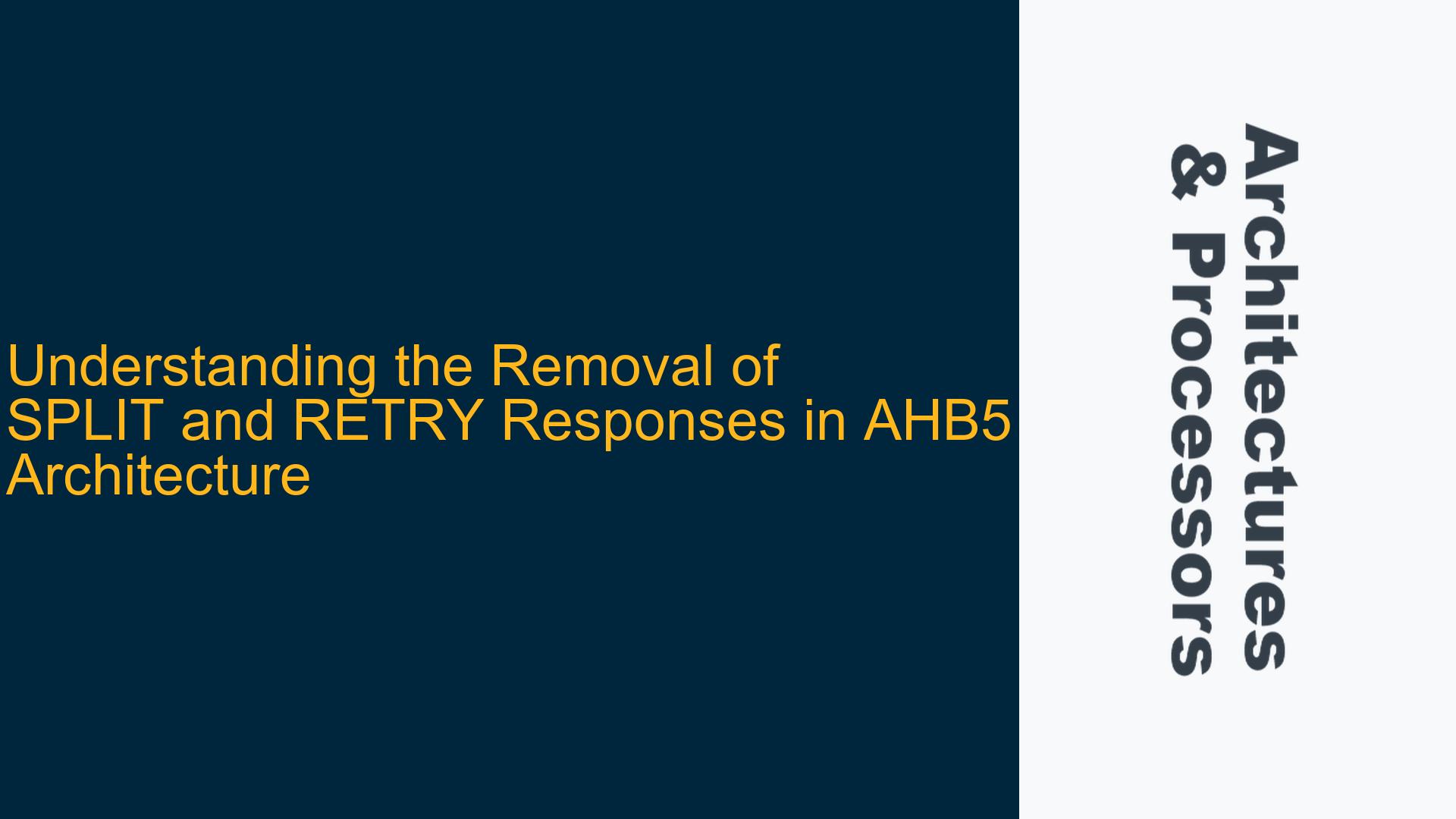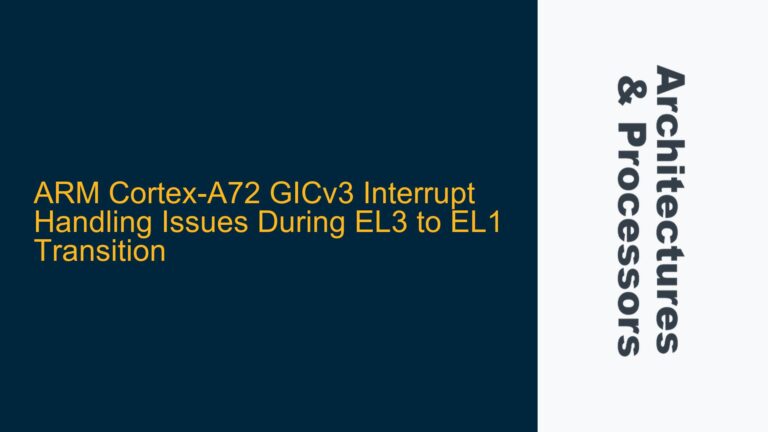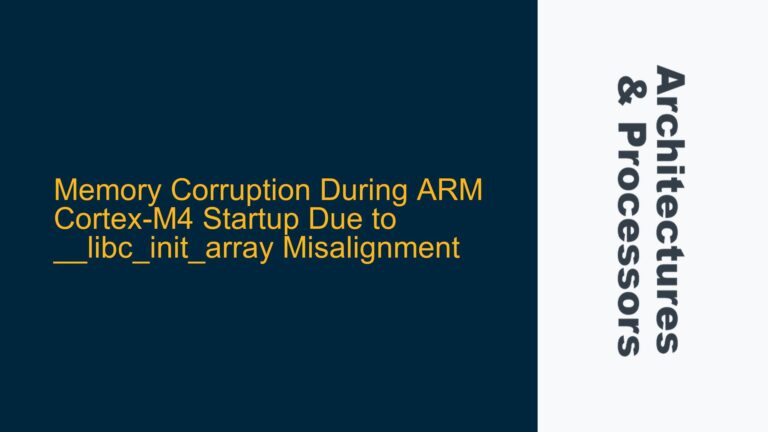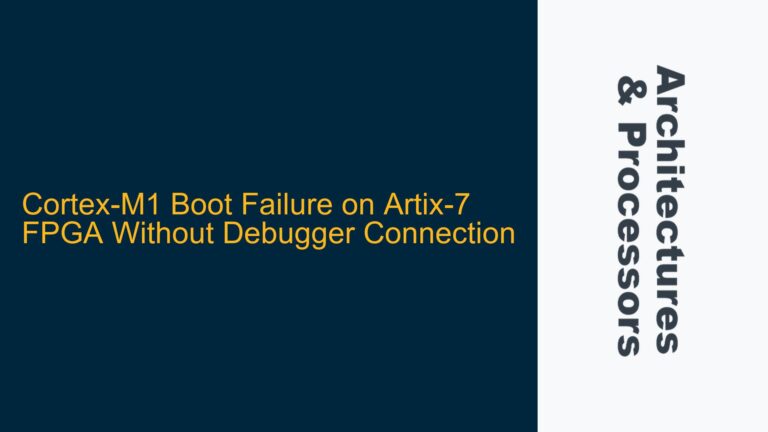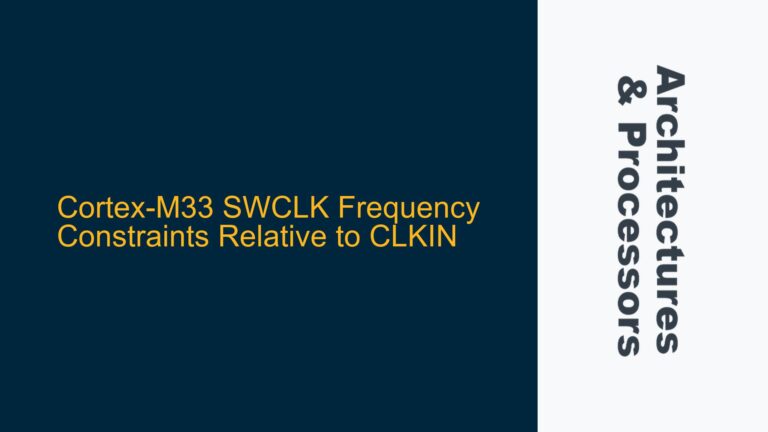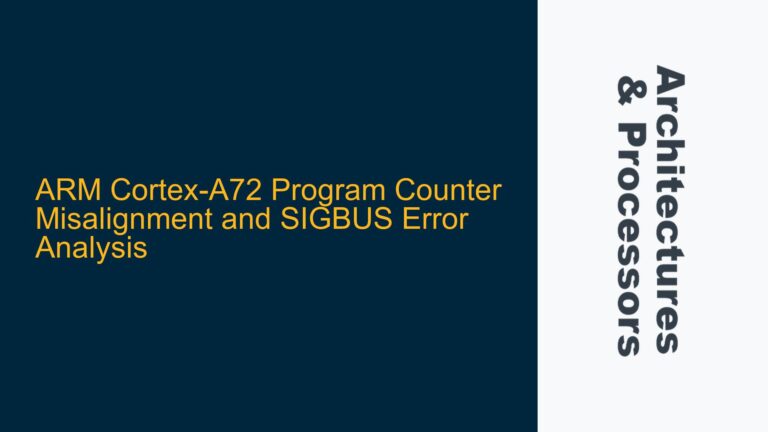AHB5 Architecture and the Absence of SPLIT and RETRY Responses
The Advanced High-performance Bus (AHB) protocol, developed by ARM, has undergone several iterations since its inception. The latest version, AHB5 (part of the AMBA 5 specification), has evolved significantly from its predecessors, particularly in its handling of bus transactions and responses. One notable change in AHB5 is the removal of SPLIT and RETRY responses, which were integral to the earlier AMBA 2 AHB specification. This removal reflects a shift in architectural design philosophy, driven by the need for improved performance and scalability in modern embedded systems.
In the AMBA 2 AHB specification, SPLIT and RETRY responses were mechanisms designed to manage bus contention in systems with multiple masters and slaves. These responses allowed a slave to signal the arbiter that the current transaction could not be completed immediately, either due to resource unavailability (RETRY) or the need for the master to relinquish the bus temporarily (SPLIT). While these mechanisms were effective in their time, they introduced complexity and potential performance bottlenecks, particularly as systems grew more complex and the number of masters and slaves increased.
The transition to AHB-lite (AMBA 3 AHB-lite) marked a significant departure from the multi-master bus architecture of AMBA 2 AHB. AHB-lite simplified the bus protocol by supporting only a single master per bus layer, eliminating the need for arbitration logic and, consequently, the SPLIT and RETRY responses. This single-master-per-layer approach, combined with the use of a bus matrix to manage access to shared slaves, provided a more scalable and efficient solution for modern embedded systems. AHB5 builds on this foundation, retaining the single-master-per-layer architecture while introducing additional features to support the demands of contemporary applications.
Evolution from Multi-Master to Single-Master Bus Architectures
The removal of SPLIT and RETRY responses in AHB5 is a direct consequence of the architectural evolution from multi-master to single-master bus designs. In the AMBA 2 AHB specification, the bus was designed to support multiple masters and slaves on a single bus. This design necessitated complex arbitration logic to manage bus access and ensure fair and efficient operation. The SPLIT and RETRY responses were critical components of this arbitration mechanism, allowing slaves to signal the arbiter when a transaction could not be completed immediately.
However, as embedded systems became more complex, the limitations of the multi-master bus architecture became apparent. The primary issue was the lack of parallel access support, which meant that only one master could access the bus at any given time. This constraint led to performance bottlenecks, particularly in systems with high data throughput requirements. Additionally, the arbitration logic required to manage multiple masters added complexity to the design, increasing the potential for errors and making the system more difficult to debug and optimize.
The introduction of AHB-lite addressed these issues by simplifying the bus architecture. By supporting only a single master per bus layer, AHB-lite eliminated the need for arbitration logic and the associated SPLIT and RETRY responses. Instead, access to shared slaves was managed by a bus matrix, which allowed multiple single-master bus layers to operate in parallel. This approach not only improved performance by enabling parallel access but also simplified the design and reduced the potential for errors.
AHB5 continues this trend, building on the single-master-per-layer architecture of AHB-lite while introducing additional features to support the needs of modern embedded systems. These features include enhanced support for low-power operation, improved data coherency, and additional signaling options. However, the core principle of a single-master-per-layer architecture remains unchanged, and with it, the absence of SPLIT and RETRY responses.
Implications and Best Practices for AHB5-Based System Design
The removal of SPLIT and RETRY responses in AHB5 has several implications for system design, particularly in terms of performance, scalability, and ease of implementation. Understanding these implications is crucial for engineers designing systems based on the AHB5 architecture.
One of the primary benefits of the single-master-per-layer architecture is improved performance. By eliminating the need for arbitration logic and enabling parallel access to shared slaves, AHB5-based systems can achieve higher data throughput and lower latency compared to systems based on the AMBA 2 AHB specification. This performance improvement is particularly important in applications with high data throughput requirements, such as multimedia processing, networking, and high-performance computing.
Another key benefit is scalability. The single-master-per-layer architecture, combined with the use of a bus matrix, allows for the creation of highly scalable systems. As the number of masters and slaves in a system increases, additional bus layers can be added to the bus matrix, enabling the system to scale without compromising performance. This scalability is essential for modern embedded systems, which often need to support a wide range of peripherals and interfaces.
However, the removal of SPLIT and RETRY responses also introduces some challenges. In particular, engineers must carefully consider the design of the bus matrix and the allocation of bus layers to ensure that the system can handle the expected workload. This requires a thorough understanding of the system’s requirements and the ability to model and simulate the bus architecture to identify potential bottlenecks and optimize performance.
In terms of best practices, engineers should focus on the following areas when designing AHB5-based systems:
-
Bus Matrix Design: The bus matrix is a critical component of the AHB5 architecture, and its design can have a significant impact on system performance. Engineers should carefully consider the number of bus layers, the allocation of masters and slaves to each layer, and the routing of transactions through the matrix. Simulation and modeling tools can be invaluable in this process, allowing engineers to identify potential bottlenecks and optimize the design before implementation.
-
Data Coherency: With the removal of SPLIT and RETRY responses, ensuring data coherency becomes more important. Engineers should implement appropriate data synchronization mechanisms, such as barriers and cache management techniques, to ensure that data is consistent across the system. This is particularly important in systems with multiple masters accessing shared memory or peripherals.
-
Low-Power Operation: AHB5 includes features to support low-power operation, such as clock gating and power domain management. Engineers should take advantage of these features to minimize power consumption, particularly in battery-powered or energy-efficient applications. This may involve careful design of the power management unit and the use of low-power modes when the system is idle.
-
Debugging and Optimization: The simplified architecture of AHB5 makes debugging and optimization easier compared to the AMBA 2 AHB specification. However, engineers should still use appropriate debugging tools and techniques to identify and resolve issues. This may include the use of performance monitoring units, trace buffers, and simulation tools to analyze system behavior and optimize performance.
In conclusion, the removal of SPLIT and RETRY responses in AHB5 reflects a broader trend in embedded system design towards simpler, more scalable, and higher-performance architectures. By understanding the implications of this change and following best practices, engineers can design AHB5-based systems that meet the demands of modern applications while minimizing complexity and maximizing performance.
